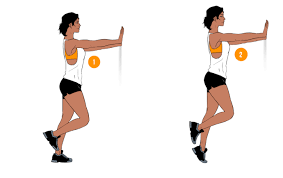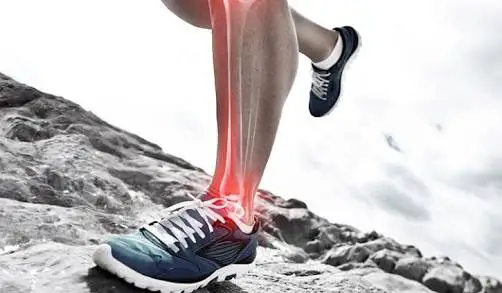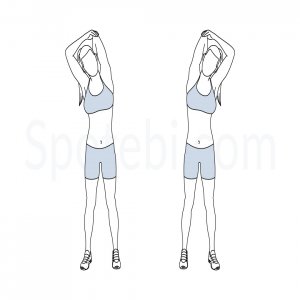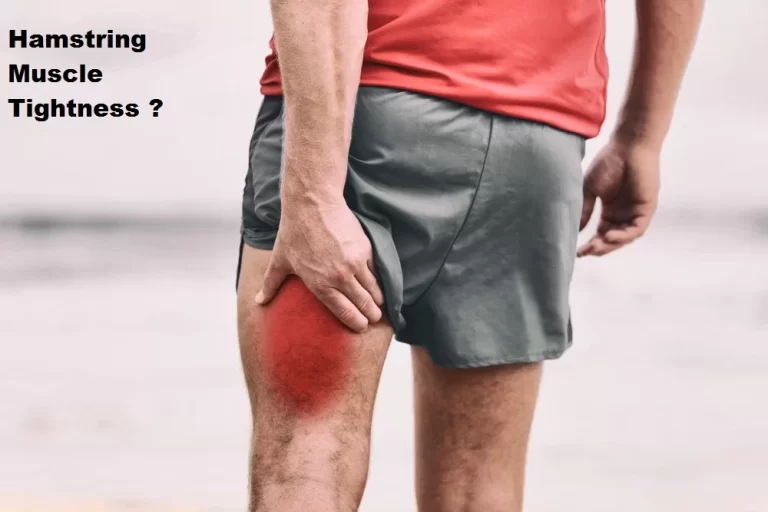The Best Exercise for the Heart
Why exercise is important for the heart?
Our heart is made up of muscle, and it should be stronger and healthier if you want an active life. It is never too late to begin exercising, and you do not have to be an athlete. Even taking a small walk for 30 minutes per day can make a huge difference.
Once you start exercising, you will find it pays off. People who do not exercise are more prone to get heart disease than people who are doing exercise and are active. it is also important to remain active as you get older because inactivity or sedentary life has been linked to a greater chance of developing heart disease. This will also increase your chances of major cardiovascular problems.
An active lifestyle is highly important for good heart health. It is one of your most useful things to strengthen the heart muscle, your weight should be under control and ward off the artery damage from high cholesterol, diabetes, and hypertension that can lead to stroke or heart attack.
Strengthening your heart muscle is one of the vital things you can do for your health. And as you know, the best way to strengthen your heart is by doing exercise only. You are helping your heart to work normally and get enough blood to the body part. That is also true that different types of exercise are needed to improve complete fitness but “Aerobic exercise and resistance training are the most important for heart health.”
What is the heart?
The heart is a fist-sized organ that pumps blood to your whole body. This is made up of the muscle that pumps blood to all parts of the body. It is the main organ of our circulatory system. The human heart contains four main chambers. That is made up of muscle and powered by electrical impulses. our brain and nervous system control our heart’s function.
Where the heart is located?
The heart is located in the anterior and middle part of your chest, posterior and slightly to the left of your breastbone. It is the muscle that pumps blood to all parts of your body to provide it with the oxygen and nutrients it needs to function.
Benefits Of Exercise For Heart Health
- Helps to decrease the risk of cardiovascular mortality
- Helps to maintain blood pressure
- Helps with weight loss and prevents obesity
- Decrease the risk of type 2 diabetes Improve the sensitivity of insulin
- Helps to decrease bad cholesterol (LDL) and improve good cholesterol (HDL)
- Reduce inflammation in the body
- Decrease resting pulse or heart rate and risk of thickening of heart muscles (cardiac hypertrophy)
- Improves vascular wall function and the ability to provide oxygen to the whole body’s muscles
- Increasing exercise tolerance Improves the quality of life of people with heart disease.
- Helps to Burn Calories
How to begin Exercising?
Before you start any new exercise, it is important to consult with your doctor, especially if you have had any past heart disease, or if heart issues run in your family. if cardiovascular risk factors are positive, then you should visit a physician’s clearance prior.
Before beginning any exercise Check your blood pressure, cholesterol panel, hemoglobin A1C (sugars), and inflammatory markers, among other indicators, are vital sources of information to help determine risk factors for higher intensity workouts.”
However, if you are a generally healthy person, use your best judgment when taking on a new workout and stay within your limits.
Types of Exercise to improve heart health.
Your exercise plan should include
- Aerobic exercise:
Aerobic training is also known as “cardio”. You are moving fast enough to increase your heart rate and breathe harder, but you should still be able to talk to someone while you are performing it. Otherwise, you are doing too hard. If your joints are painful, you have to choose a low-impact activity, like swimming or walking. here we give some examples of aerobic training Walking, Biking on flat terrain, and Swimming.
If you’re ready for a more strenuous workout, you can try this: Brisk walking, Jogging, Playing sports like badminton, basketball, and soccer, Hiking uphill, and Dancing.
- Stretching exercise:
Regularly stretching improves your muscle flexibility and helps you to move easily. Stretching after you have warmed up or finished exercising will help you to prevent muscle soreness and fatigue. you have to stretch major muscle groups in your body like the chest muscles, hamstrings, calf, and quadriceps.
- Strength training:
To improve heart muscle you have to strengthen larger muscles in your body to get proper cardiac output. You can do strength training with the bits of help of weights, resistance bands, or your body weight. perform it 2-3 times a week. Give some rest to muscles, To recover for a day between sessions. Examples of strength training (resistance training)
Lifting free weights. Do exercise with resistance bands, Gym weights equipment, and Calisthenics like push-ups, curl-ups, squatting, and lunges.
Here we explain the best exercises to strengthen your heart.
Aerobic exercise
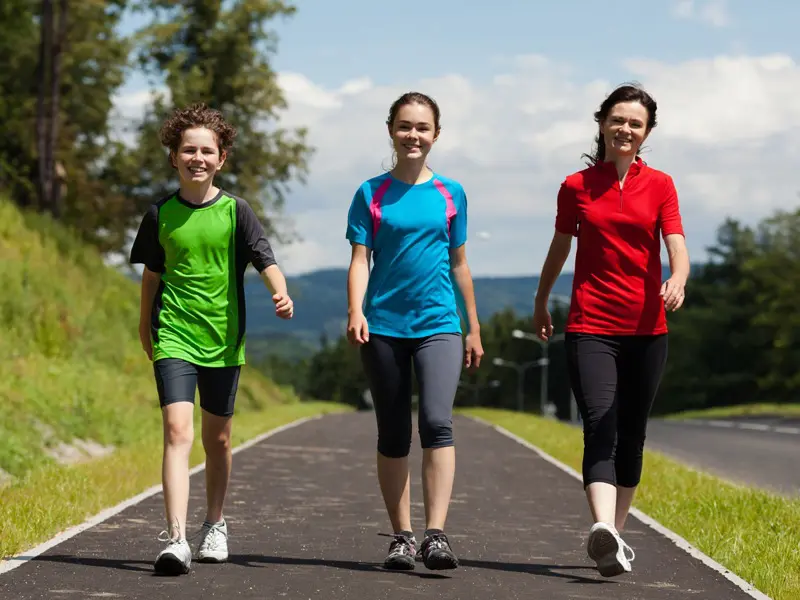
Walking
- Walking is too easy for a healthy person. But speed walking is a necessity to strengthen your heart. Walking with speed will get your heart rate increased and is easier on your joints than other exercises. You can walk anywhere at your time with comfort. The only you need is a pair of supportive shoes. start a short walk during your lunch break or a longer walk on the weekend. You can listen to music, a podcast, or walk with your friend. The flexibility of walking makes it easy for anyone to move and to keep doing it.
Cycling
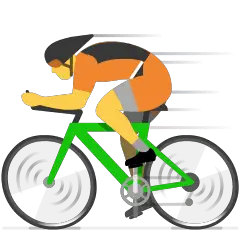
- Riding a bike can do more easy for you than just getting you from one place to the next but Cycling has been proven to help decrease the risk of heart disease. It uses your major muscles in the legs, which helps to up your heart rate. Cycling can also improve your mental health.
Playing A Sport
- If you like playing a sport. then it’s a good choice to play your favorite game and improve your heart health. it is time to get the adrenaline pumping with a lot of serotonin. Playing a sport like badminton, tennis, or basketball improves blood circulation and oxygen flow and gets the heart pumping. However, if you have existing heart disease, avoid extreme exertion and consult your doctor before playing a sport.

Swimming
- Swimming is a whole-body exercise that helps to improve cardiovascular output and muscle strength, endurance, and fitness. However, it may not be suitable for all. If you have existing heart disease, avoid extreme exertion and consult your doctor before starting swimming.
Household Chores
- Household chores are the best way to keep moving and stay active. Activities like dusting, cleaning, settling the kitchen or wardrobe, watering the plants, etc. This is a great way to help your heart be healthy.
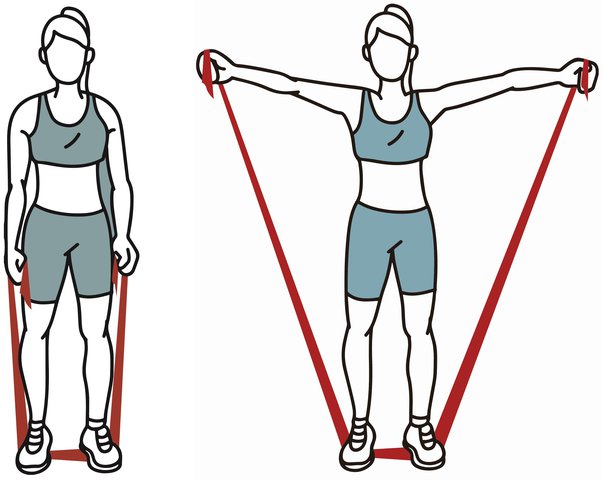
Strength Training Exercise
Resistance Band Exercises
Resistance band exercise is a great way to add a challenge to your muscles. Some studies showed that resistance exercise could decrease the risk of cardiovascular diseases (CVD) in humans of any age and decrease body fat, blood sugar, and total cholesterol. Here we explain a few resistance band exercises you can do at home.
Lateral Raise
How to do it?
- To do this exercise you have to Stand up place both feet on the middle of the resistance band and hold both ends of it in your hands.
- Elevate both arms by the side, until they reach shoulder height, then return to your initial position and repeat 10 to 15 times.

Squats
How to do it?
- To perform squats with a resistance band you have to Place both feet on the middle of the resistance band and hold both ends of it with your hands.
- Slowly flex your knees into a squat position, then return to your initial position and repeat 10 to 15 times.
Chest Press
How to do it?
- To perform a chest press take a Sitting or standing position place the resistance band behind your back and hold both ends of it.
- Stretch your arms out in front of your chest, then return to your initial position and complete 10 to 20 reps.
Leg Press
How to do it?
- To perform a Leg Press take Sit on a chair with your back straight.
- Put one foot in the middle of the resistance band and hold each end of it with your hands. flexed your knee towards you, then straighten it back out in front of you before going to your beginning position and repeating with both legs 10 to 20 times.
Bicep Curl
How to do it?
- To do this exercise you have to Sit or stand place both your feet on the middle of the resistance band and hold both ends of it with your hands.
- Raise your arms out in front of you to chest height, then return to your initial position and repeat 15 times.
Seated Calf Press
How to do it?

- To do this exercise you have to Sit on a chair with your back straight. Put one foot in the middle of the resistance band and hold each end of it with your hands.
- Extend your leg and point your toes towards the sky, then point your toes forward towards the floor. Return to the initial position and repeat with both legs 10 to 15 times.
Triceps Press
How to do it?
- To do this exercise you have to Stand up and put one end of the resistance band under the heel of one of your feet.
- Grab the other end of the band with each hand, taut the band so it runs back to your body and pulls it above your head, then return to your initial position and repeat 10 times on both sides.
Weight Training
- Weight training was considered not very safe for persons with heart disease, but new findings show that it is safe and effective.
- Consult your doctor and do the weight training under the supervision of a certified and experienced fitness professional.
Bodyweight Exercises
If you do not like to lift weights, you can perform bodyweight training. In this workout, you can use your own body’s weight instead of dumbbells or weight plates. It can include moderate to high-intensity exercises like push-ups, mountain climbers, high jumps, squatting, etc. Your physiotherapist will design a safe and effective bodyweight training program, depending on your fitness level and heart condition.
Here, we describe some bodyweight exercises for you:
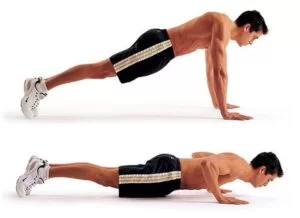
Push-ups
How to do it?
- To perform a push-up you have to get on the floor on all four limbs and place your hands slightly wider than your shoulders. Do not lock out the elbows, the elbow should be slightly flexed. straighten your legs back so you are balanced on your hands and toes, your feet should be hip-width apart. Once you get this position. now you will be doing the real work. Contract your abdominals and tighten your core muscles by pulling your tummy button toward your spine.
- Breathe in as you slowly flex your elbows and lower yourself to the ground until your elbows are at a ninety-degree angle.
- Breathe out while contracting your chest muscles and pushing back up through your hands, returning to the beginning position.
Squatting
How to do it?
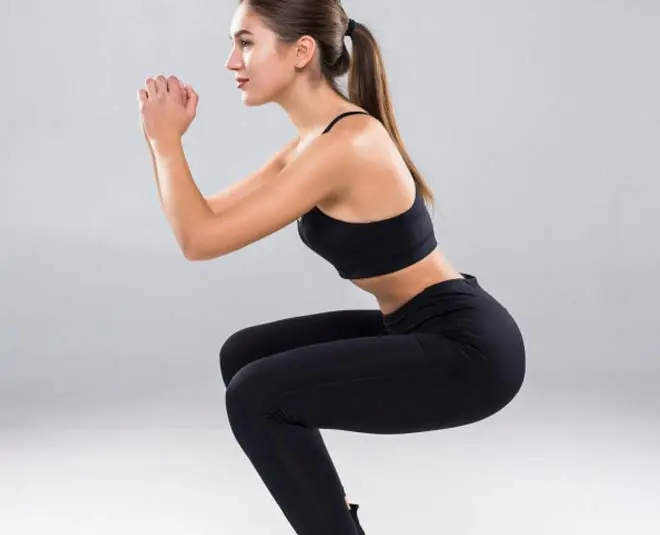
- To perform this exercise you have to simply stand with your feet and shoulder width apart, toes slightly out, and your hands down by your side.
- Now you have to hinge at the hip and flex your both knees, sitting back like you are performing a sit-down position from standing, arms should be raised in front of you. Your back remains straight. your thighs are parallel to the ground. Hold for two seconds, then push up by your heels and return to the initial position.
- Do this again for 10 to 15 repetitions in an initial phase then gradually increase the repetitions.
Mountain climbing
How to do it?
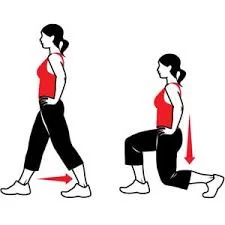
- To perform this exercise you have to come into a plank position, your weight should be evenly distributed between your hands and your toes.
- Place your hands shoulder-width apart, back flat, abdominals engaged, and head in alignment.
- Move your left knee towards your chest as much as possible.
- Do this on the right leg pulling the left knee out and bringing the right knee in.
- Your hips should be down and run your knees in and out as far and as fast as your ability has.
Lunges
How to do it?
- For doing lunges you have to Stand on the ground with your feet together and step your left leg forward in front of you.
- Your right knee should touch the ground with your left leg still at a ninety-degree angle.
- Push off your left foot to return to the initial position Step forward with your right leg and form a ninety-degree angle to touch your left knee to the ground.
- Repeat for 3 to 4 sets of 15–20 lunges.
Balance And Flexibility
Both balance and flexibility exercises are also good for improving heart rate, decreasing cardiovascular disease risk, and improving muscle tone. There are some exercises you can do at home:
Stretching
Doing Stretching exercises after the workout routine helps you to cool them down (walk or jog to warm up the muscles before exercising). You can also perform these exercises like touching the toes, calf stretches, and neck and arm stretches while sitting. Stretch for a good 20-25 minutes every day.
Triceps (muscles at the back of the arm)
How to do it?
- You can perform this stretch either in a sitting or standing position. It is a great one to do at your office during work, too.
- Reach your left arm toward the ceiling, also flexed from the elbow, and reach for your upper reverse. Try to put your left hand toward the middle of your reverse, middle cutlet on your chin. Place your right hand on top of your left elbow and gently push your left arm down so your hand slides down your back a bit.
- Hold for about thirty seconds, also repeat this on the other side.
Chest muscle (pectoralis major)
How to do it?
- Come in a standing or sitting position.
- Now interlock fingers, and raise your arms above the head.
- Take your scapulae together by squeezing your back muscles and moving your elbows and hands backside.
- you can put your hand in different positions like behind your head, hands on top of your head, or hands 2 to 4 inches above your head.
- If you feel a stretch then hold it 20-30 seconds 2-4 times.

Hamstrings (back thigh muscles)
How to do it?
- To perform this exercise you have to Sit on the mat with both legs out straight.
- Straighten your both arms and reach forward by flexing from the torso as much as possible while keeping your knees extended.
- Hold this simple position for 30 – 40 seconds.
- Relax back into the beginning position.
- Repeat 3-4 times.
- Be sure to stretch until a mild pull is felt in the back of your thighs. If you feel any extra pain.
Quadriceps (front thigh muscles)
How to do it?
- To perform quadriceps stretching you have to take a standing position on a single leg. If you can not balance on a single leg, use a wall or any stable object.
- Now hold the flexed leg with your corresponding hand and pull upward towards your trunk. your chest should be straight.
- Hold for 30 seconds. repeat this on the other side and do it on both sides 3 to 4 times.
Calves (gastrocnemius)
How to do it?
- To perform a Calves (gastrocnemius) stretching you have To Stand around arm’s length in front of a wall.
- Put the left leg in front of the right. extend both arms to the wall.
- Press the back heel into the ground and extend the back leg while keeping the front leg flexed.
- Hold this calf stretch for 10–20 seconds.
- Perform this stretch on the opposite side.
Yoga
yoga is very useful for your heart health. Performing yoga will help you to strengthen and tone your muscles. Certain types of yoga can get your heart rate raised, while still providing the calm that will lower your blood pressure. Yoga asanas and pranayama are great for improving heart disease. It will improve muscle tone and lung capacity by relieving stress. Scientists prove that yoga is a useful lifestyle intervention for decreasing cardiovascular disease. Here we explain some yoga asanas to help the heart.
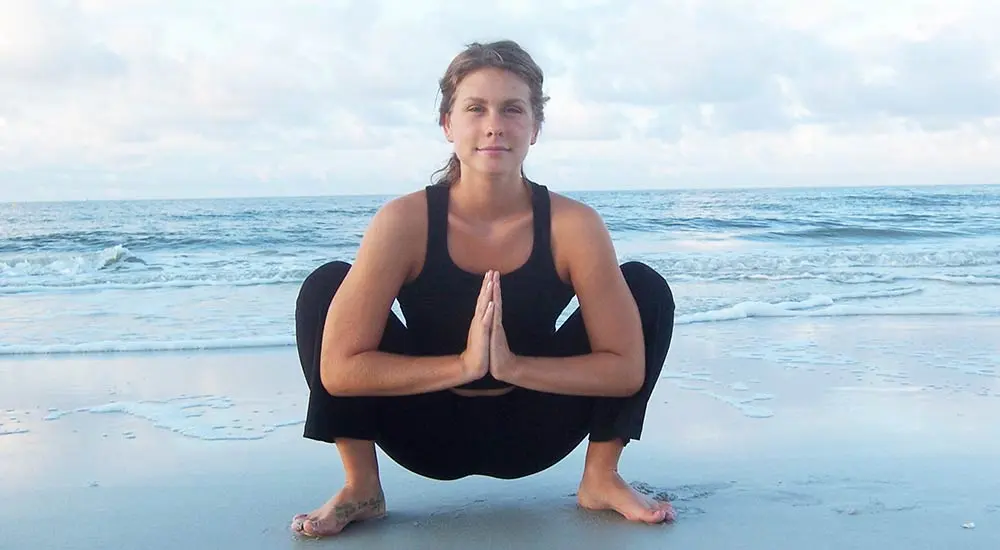
Malasana
How to do it?
- To perform this asana you have to stand with your feet on the mat’s width apart.
- Flex the knees and lower your buttocks toward the ground to come into a squatting position.
- It is natural for your toes to want to turn out and that is ok, but do not overdo it.
- Take your upper arms inside your knees and flex the elbows to both palms should be together into Anjali mudra (prayer position).
- Hands are closer to your heart center in the prayer position. your upper arms should continue pressing over the thighs.
- Your spine should be straight, your buttocks moving toward the ground, and your shoulders relaxed away from your ears.
- Hold this position for 5 to 6 seconds. then straighten the legs to come out. You can directly come into a Forward Fold.
- Get this pose three times to take full advantage of getting warmed up. If you are practicing at home, it is fine to do some other poses in between your squats.
Adho mukha svanasana
How to do it?
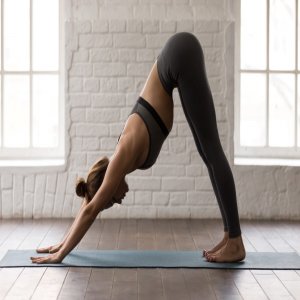
- To perform this asana you have to quadruped position, with your hands a little bit in front of your shoulders and your knees directly under your hips. Spread your fingers touching down through all four corners of your hands, and turn your toes under.
- Breathe out and raise your knees from the ground, at first keeping your knees slightly flexed and your heels lifted off the floor.
- Elongate your coccyx bone away from the back of your pelvis, raise the sitting bones toward the sky, and move your inner legs from your inner ankles up through your groins.
- On exhale, push your upper thighs back and stretch your heels toward the floor.
- straight your knees without locking them.
- Firm your outer arms and press the bases of your index fingers actively into the ground.
- Elevate along your inner arms from the wrists to the tops of the shoulders.
- Firm your scapulae against your back, then widen them and move them toward your tailbone.
- Maintain your head between your upper arms.
- Maintain this pose for 10 to 15 seconds., then flex your knees on an exhalation and lower yourself into Child’s Pose.
Setu bandha sarvangasana
How to do it?

- To perform this asana you have to Lie on your back with your knees flexed and the soles of your feet flat on the floor.
- Straighten your hands on the ground with your fingers reaching toward your heels.
- You should be able to just slightly touch the backs of your heels with your fingertips.
- your feet should be aligned. hold this pose throughout the asana.
- the soles of your feet should be pressed on the floor to raise your hips off the floor.
- Your arms can stay outstretched on the ground next to your body.
- This should be a comfortable pose. You can hold here for 5 to 7 minutes as your body settles into the stretch and gets the benefits of a passive backbend.
- If the pose causes your back to hurt, then release the pose.
You can also try pranayama if you are looking for a breathing exercise for the heart.
High-intensity-interval-training (HIIT)
- High-intensity interval training, also known as HIIT, is a type of cardio workout that needs you to perform short bursts of intense exercises, followed by a minimum rest period.
- You can burn a lot of calories fast with HIIT, and it is an effective way to burn body fat. One example of HIIT is to perform 60 seconds of fast running, followed by 3 minutes of walking on the floor. Or, you could perform jump squats or burpees for 50 seconds, followed by a 20-second rest period. There are many alternatives and options for a HIIT workout.
- A HIIT workout will typically range from 25 to 35 minutes in duration. Goal to do a HIIT workout at least 2 times per week. elevating and lowering your heart rate helps to burn calories and improves the function of your blood vessels.
How Much And How Often To Do Exercise?
The American Heart Association recommends 140 to 150 hours of moderate-intensity and 70 to 75 minutes of vigorous exercise. This means you can either do 20 to 30 minutes of cardio for 3 to 5 days or 60 minutes of cardio for 3 days and 35-45 minutes of strength training or stretching exercises.
Customize your cardio workout according to your heart’s condition and lifestyle. Start with 3 days of cardio and one day of strength training/yoga. Increase the frequency to 4-5 days of cardio and 2-3 days of weight training as you progress.
Prevention should be taken care of during heart exercise:
- Before starting any exercise you have to check your vitals like blood pressure, heart rate, and SPo2.
- If you have any pre-existing heart conditions then consult your doctor before starting the exercise and doctor advised you to go for exercise then take your medicine on time then go for exercise.
- During exercise, if you feel any discomfort or fatigue stop immediately and consult your physician
- Do some stretching before and after exercise.
- Take a protein-rich diet to nourish your muscles.


